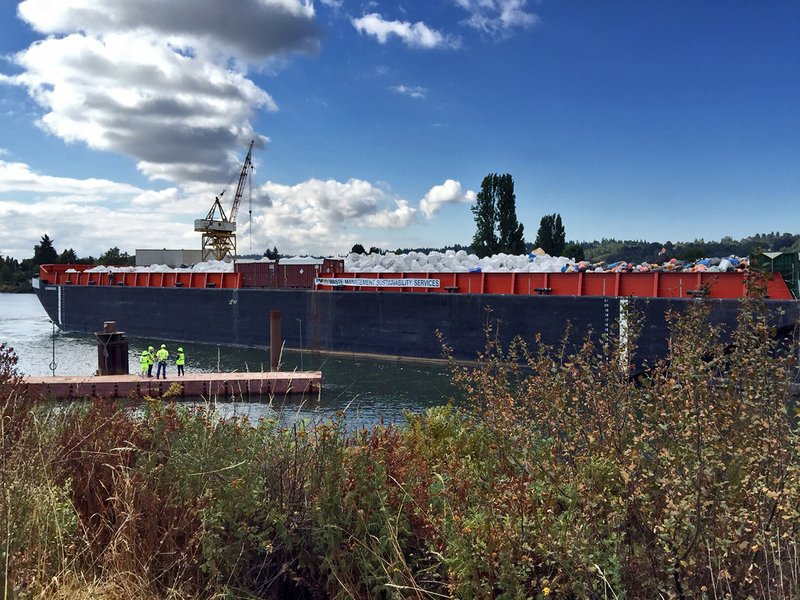JUNEAU, Alaska -- Hundreds of tons of marine debris have been collected from the shores of Alaska and British Columbia as part of an unprecedented cleanup effort that an organizer says barely made a dent in the rubbish that remains on beaches.
A barge heaped with white, heavy-duty bags and loose piles of Styrofoam, bottles, commercial fishing gear, thousands of large buoys and floats, and other debris arrived in Seattle on Thursday, three weeks after picking up its first load in Kodiak, Alaska.
Some of the debris collected likely was swept to sea by the 2011 tsunami in Japan, which killed thousands of people.
But marine debris in general, including rubbish such as plastics and fishing nets, is an ongoing environmental problem.
In Seattle, volunteers will have to pick through the piles, sorting what can be recycled or returned and what must be taken by train to a disposal site in Oregon.
Sorting isn't expected to begin until next month and could take a couple of weeks to complete, said Janna Stewart, tsunami marine debris coordinator with the Alaska Department of Environmental Conservation.
Still, project organizers were relieved when the barge docked in Seattle after a largely uneventful journey. There were no major weather delays along the way that would have racked up costs, and the bags held up as they were hoisted by helicopter to the barge, often from remote, rocky beaches.
"Having it come in was just incredibly gratifying," Stewart said.
Officials say the project, unprecedented in scale in Alaska, was spurred by the amount of material that has washed ashore; the high cost of shuttling small boatloads of debris from remote sites to port; and a demand by the Anchorage landfill that fishing nets and lines -- common debris items -- be chopped up, a task that Stewart called impossible.
The mass of debris collected and loaded onto the barge, which is roughly the size of a football field, represents just 1 percent to 2 percent of the cleanup work that remains in Alaska, said Chris Pallister, president of the cleanup organization Gulf of Alaska Keeper, which coordinated the project.
Alaska has more coastline than all other coastal states combined, and Pallister estimates that crews could fill the barge three more times from what remains on one island alone, Montague Island in the Gulf of Alaska.
The area on Montague that needs to be cleaned is 74 miles long, Pallister said. Over the past three summers, cleanup crews have covered 10 miles of that stretch and filled at least 1,300 heavy-duty "super-sacks," he said.
Many of the sites that have been cleaned are remote -- not the kind of beaches that attract tourists. But it's important to clean the areas since disintegrating foam can seep into salmon streams or be ingested by birds, Stewart said. There is also concern about the impact of broken-down plastic on marine life.
Pallister worries about securing funding to continue the cleanup work. The barge project was funded in part with $900,000 from the state's share of a $5 million gift from the Japanese government for states affected by tsunami debris. Pallister's group committed $100,000. The total cost of the project was still being tallied.
The barge arrived in Kodiak on July 15, where it loaded debris collected in that region in 2013 and 2014. Most of the collection sites were in Alaska, with the last stop in Alaska near Wrangell-St. Elias National Park and Preserve. There also was a pickup site in British Columbia.
A Section on 08/08/2015

